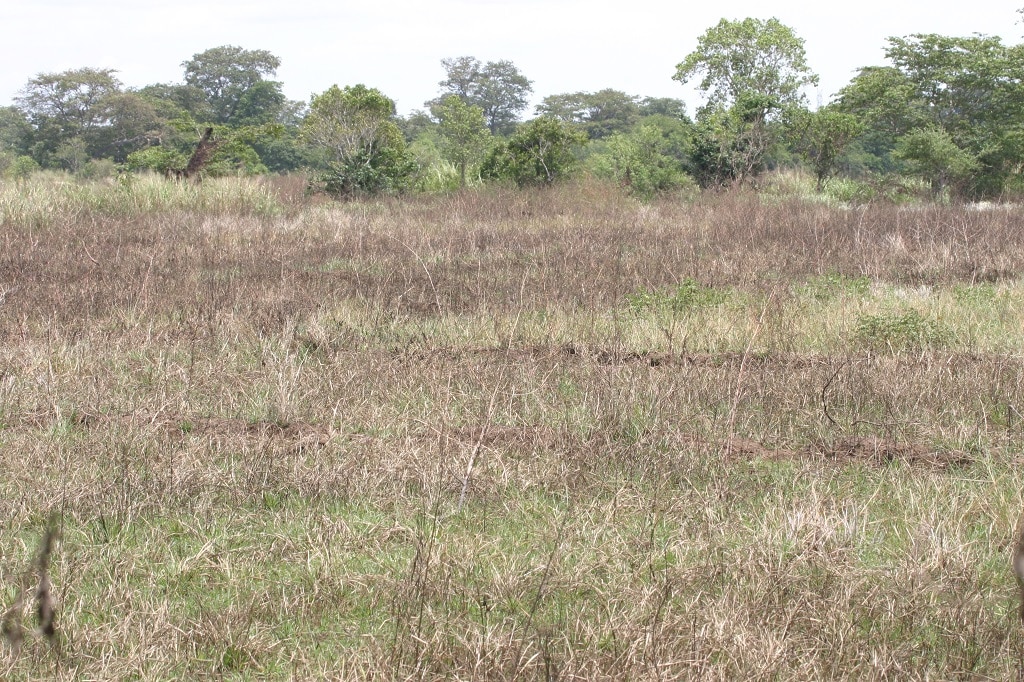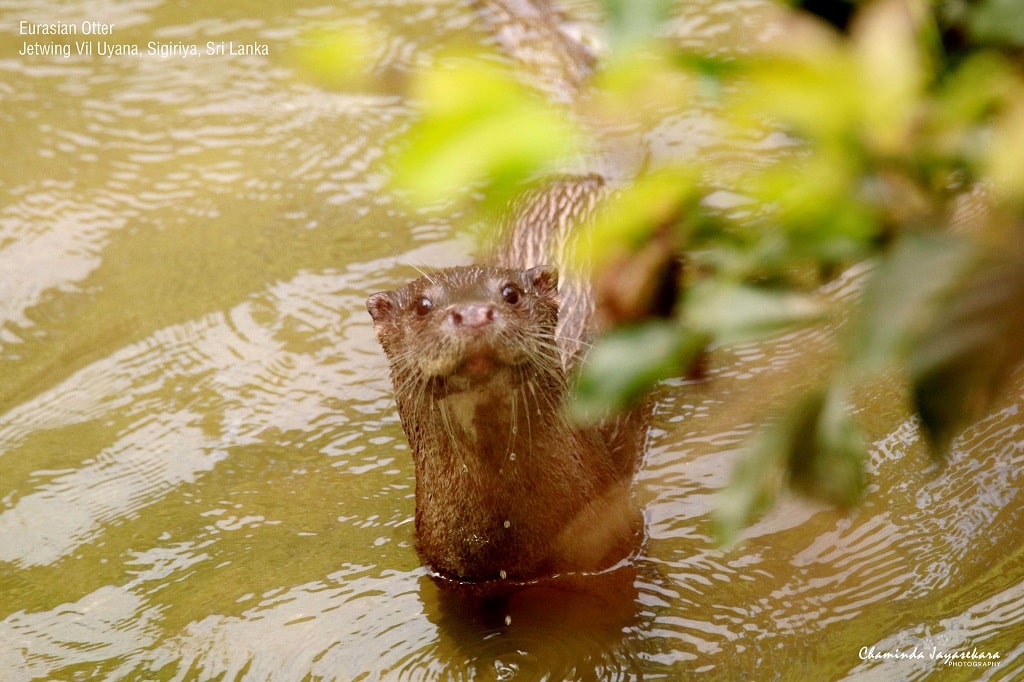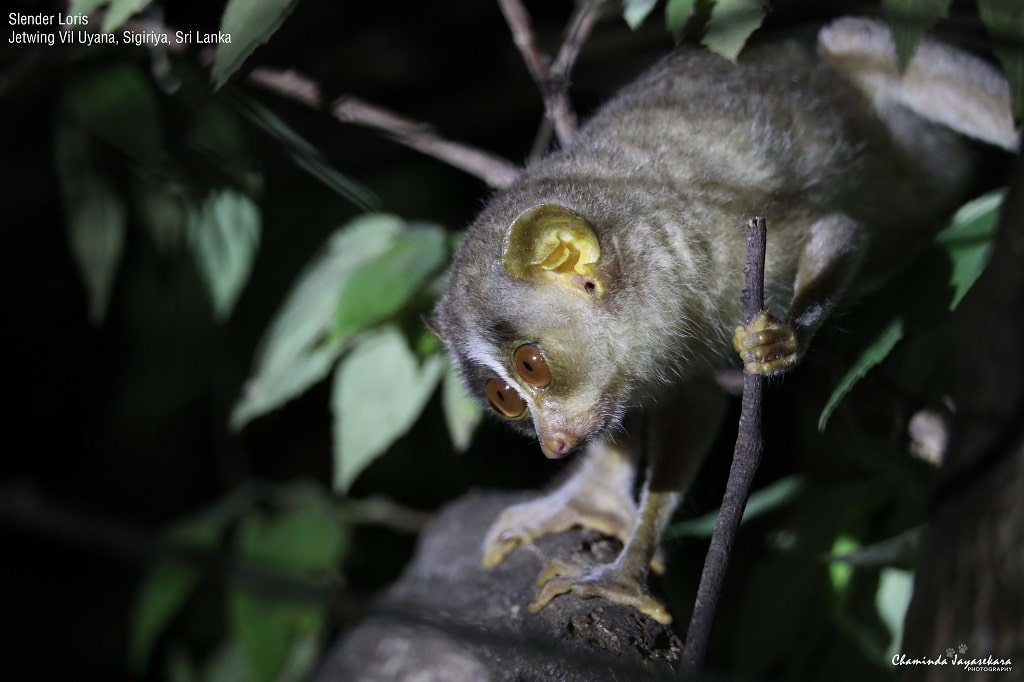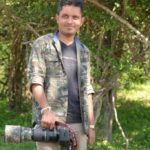We, at the International Otter Survival Fund, understand the importance of wetlands, to us, to wildlife, and to the general health of the environment within the area. The following is a report from one of our members, Chaminda Jayasekara, who is passionate about his project in Sri Lanka and the wildlife that has thrived as a result.
“There is no better example of what can be done to restore an area than Jetwing Vil Uyana’s story that started in the early 2000s. An abandoned plot of land previously used for slash and burn cultivation, locally known as chena cultivation, was selected as the site for the most ambitious hotel project in Sri Lanka. The idea was to build a luxury resort nestled within a lush wetland but there was one glaring problem – the wetland in question did not exist.

The land before wetland development. Photo credit: Chaminda Jayasekara.
Drawing inspiration from the wetland in Barnes in the outskirts of London, Jetwing embarked on a mission to convert the chena land into a thriving wetland. It was a daunting task: the land lacked floral diversity. A biodiversity survey carried out at the site prior to construction returned paltry results. Only 29 species of birds were reported from the site, along with 12 mammals, and a handful of other animals – a mere fraction of the rich fauna that comprises the Northcentral regions of Sri Lanka.
As a measure for restoration, when canals and lakes were dug and the land replanted with native vegetation, the fauna began trickling in. The Jetwing Vil Uyana resort opened its doors in 2006 and, as of August 2018, the faunal diversity had swelled from pre-construction numbers, and slowly but surely the wetland settled and stabilised. Jetwing Vil Uyana currently boasts of over 140 species of birds, over 20 mammals, with the numbers of butterflies, reptiles, and amphibians also showing marked increases.

The Eurasian otter found a new home among Jetwing’s wetland. Photo credit: Chaminda Jayasekara.
The resort, which was built alongside the new wetlands, has new residents like the Eurasian otter (Lutra lutra), whose presence is a testament to the quality of the habitat now available. While the initial sightings were fleeting nocturnal glimpses, they feel more at home in the hotel’s waterways and canals now and can be found hunting even during the evenings. Camera traps, initially deployed around the property to study its population of fishing cats (Prionailurus viverrinus), have also captured the fascinating behaviour of the otters and their movements.
In addition to otters, several other rare and elusive creatures have taken advantage of the habitat on offer and moved in permanently. The grey slender loris (Loris lydekkerianus nordicus) was one of the first such creatures reported, with the first sighting being in 2010. This year the Loris Conservation Project celebrates its tenth anniversary. Our Loris Conservation Site is, in fact, the first and only conservation area declared for this nocturnal primate on the island.

Slender Loris, another rare species that now resides in the area. Photo credit: Chaminda Jayasekara.
Three of Sri Lanka’s four wild cats have been recorded at the hotel, with the fishing cat being the most frequently spotted given the property’s extensive riparian habitat. As aforementioned, a research effort to understand the behaviour and habits of this feline was launched with the aid of camera traps and has, to date, been quite successful. The knowledge gleaned has allowed awareness programmes to be carried out amongst the local people, dispelling misconceptions about this fascinating creature.
Alongside mammalian diversity, the wetland habitat has also created a refuge for a myriad bird species, reptiles, and amphibians including a host of migrants and endemics.”
Much has been documented of the impact that we are having on the natural world and the habitats that we live alongside. Stories such as this offer an opportunity for us to gain an understanding of what we can do to reverse that trend and make such a positive impact on the wildlife and environment around us. With a little effort from us all, we can really make a huge difference.


